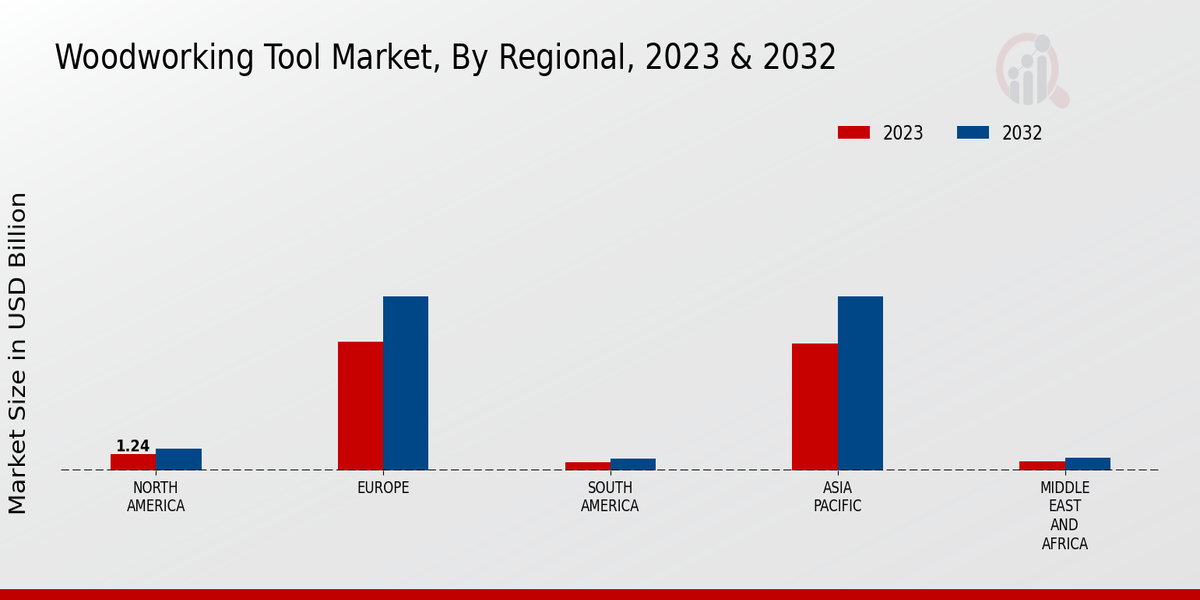Market Trends and Projections
Rising Demand for DIY Projects
The Global Woodworking Tool Market Industry experiences a notable surge in demand driven by the increasing popularity of DIY projects. As more individuals engage in home improvement and crafting activities, the need for quality woodworking tools escalates. This trend is particularly evident in urban areas where space constraints encourage innovative solutions. The market is projected to reach 24.3 USD Billion in 2024, reflecting a growing consumer base that values personalized home decor and functional furniture. The rise of social media platforms showcasing DIY tutorials further fuels this interest, suggesting a sustained growth trajectory for the industry.
Increased Online Sales Channels
The Global Woodworking Tool Market Industry benefits from the proliferation of online sales channels. E-commerce platforms provide consumers with easy access to a wide range of woodworking tools, often at competitive prices. This shift towards online shopping is particularly appealing to tech-savvy consumers who value convenience and variety. Retailers are increasingly investing in digital marketing strategies to reach potential customers, enhancing visibility and sales. The growth of online sales channels not only expands market reach but also facilitates informed purchasing decisions through customer reviews and product comparisons. This trend is likely to continue shaping the industry landscape.
Growth of the Construction Industry
The expansion of the construction industry significantly impacts the Global Woodworking Tool Market Industry. As urbanization accelerates and infrastructure projects proliferate, the demand for woodworking tools rises correspondingly. Construction professionals require reliable and efficient tools to meet project deadlines and quality standards. This trend is particularly pronounced in emerging economies where rapid urban development is underway. The construction sector's growth is expected to drive the woodworking tool market, contributing to a compound annual growth rate of 3.51% from 2025 to 2035. This correlation underscores the interdependence between construction activities and woodworking tool demand.
Technological Advancements in Tools
Technological innovations play a pivotal role in shaping the Global Woodworking Tool Market Industry. The introduction of smart tools equipped with advanced features such as precision measurement, automated settings, and enhanced safety mechanisms appeals to both professional woodworkers and hobbyists. These advancements not only improve efficiency but also enhance the overall user experience. As manufacturers invest in research and development, the market is likely to witness an influx of high-tech tools that cater to diverse woodworking needs. This trend could contribute to the market's growth, with projections indicating a value of 35.5 USD Billion by 2035.
Sustainability and Eco-Friendly Practices
Sustainability has emerged as a crucial driver within the Global Woodworking Tool Market Industry. Consumers increasingly prefer tools made from sustainable materials and those produced through eco-friendly processes. This shift is influenced by a growing awareness of environmental issues and a desire to minimize carbon footprints. Manufacturers are responding by adopting sustainable practices, such as using responsibly sourced wood and recyclable materials in tool production. This trend not only aligns with consumer values but also positions companies favorably in a competitive market. As sustainability becomes a priority, the industry is likely to see a rise in demand for eco-conscious woodworking tools.








